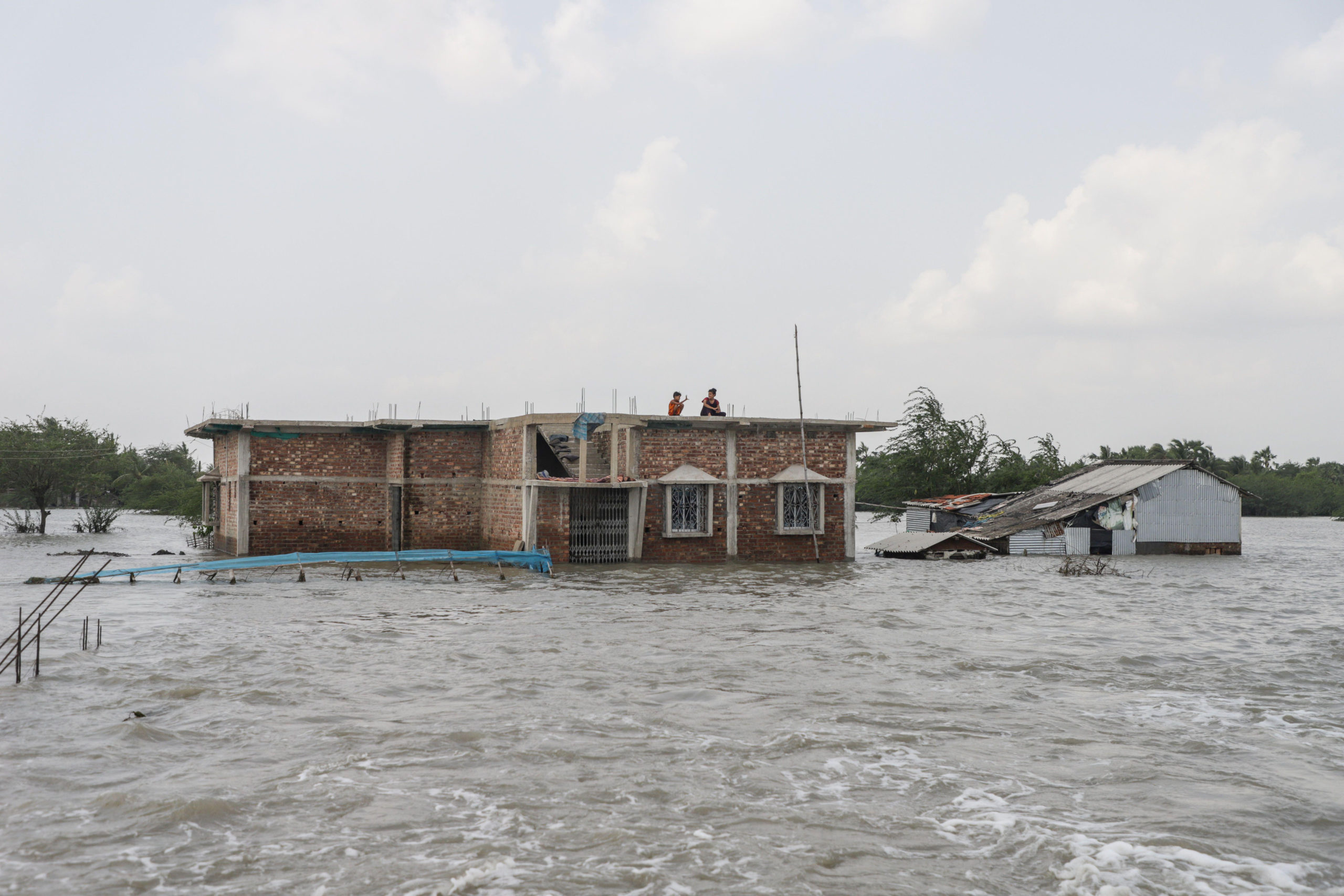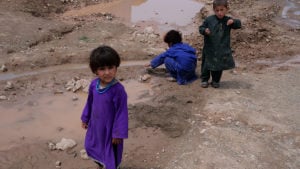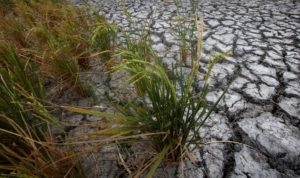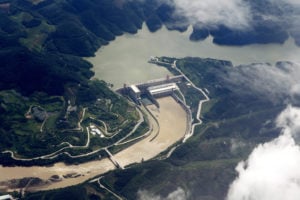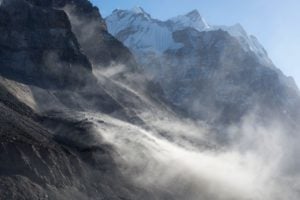The increased number and intensity of current heatwaves, floods, fires and storms all around the globe are caused by human-induced climate change. And it will get far worse unless we control our carbon dioxide emissions, the Intergovernmental Panel on Climate Change (IPCC) says in a landmark report.
The stark warning by scientists from 66 countries has been endorsed by all member states of the United Nations. In its summary for policymakers released on 9 August, Working Group 1 (WG1, the physical scientists) of the IPCC says: “Global surface temperature will continue to increase until at least the mid-century under all emissions scenarios considered. Global warming of 1.5°C and 2°C will be exceeded during the 21st century unless deep reductions in CO2 and other greenhouse gas (GHG) emissions occur in the coming decades.”
Right now, the world is 1.07 degrees Celsius hotter than in pre-industrial times, and the effects are there for all to see. Under current GHG emissions, the scientists predict a three-degree hotter world by the end of the century. Governments committed in the 2015 Paris Agreement that they would keep warming within 2 degrees and try for a 1.5-degree ceiling. But current emission controls are far from matching those commitments.
So, what happens in a three-degree hotter world? In this latest report, the scientists say: “Many changes in the climate system become larger in direct relation to increasing global warming. They include increases in the frequency and intensity of hot extremes, marine heatwaves, and heavy precipitation, agricultural and ecological droughts in some regions, and proportion of intense tropical cyclones, as well as reductions in Arctic sea ice, snow cover and permafrost.”
A crucial concern for monsoon-dependent South Asia, Southeast Asia and East Asia: the report says, “Continued global warming is projected to further intensify the global water cycle, including its variability, global monsoon precipitation and the severity of wet and dry events.” Swapna Panickal, a scientist at the Indian Institute of Tropical Meteorology and one of the IPCC report authors, told a group of journalists that the monsoon change report of India’s Ministry of Earth Sciences fed into this conclusion.
In the IPCC report, monsoon rainfall is projected to increase in the mid to long term at the global scale, particularly over South and Southeast Asia, East Asia and West Africa, apart from the far west Sahel. The monsoon season is projected to have a delayed onset over North and South America and West Africa as well as a delayed retreat over West Africa.
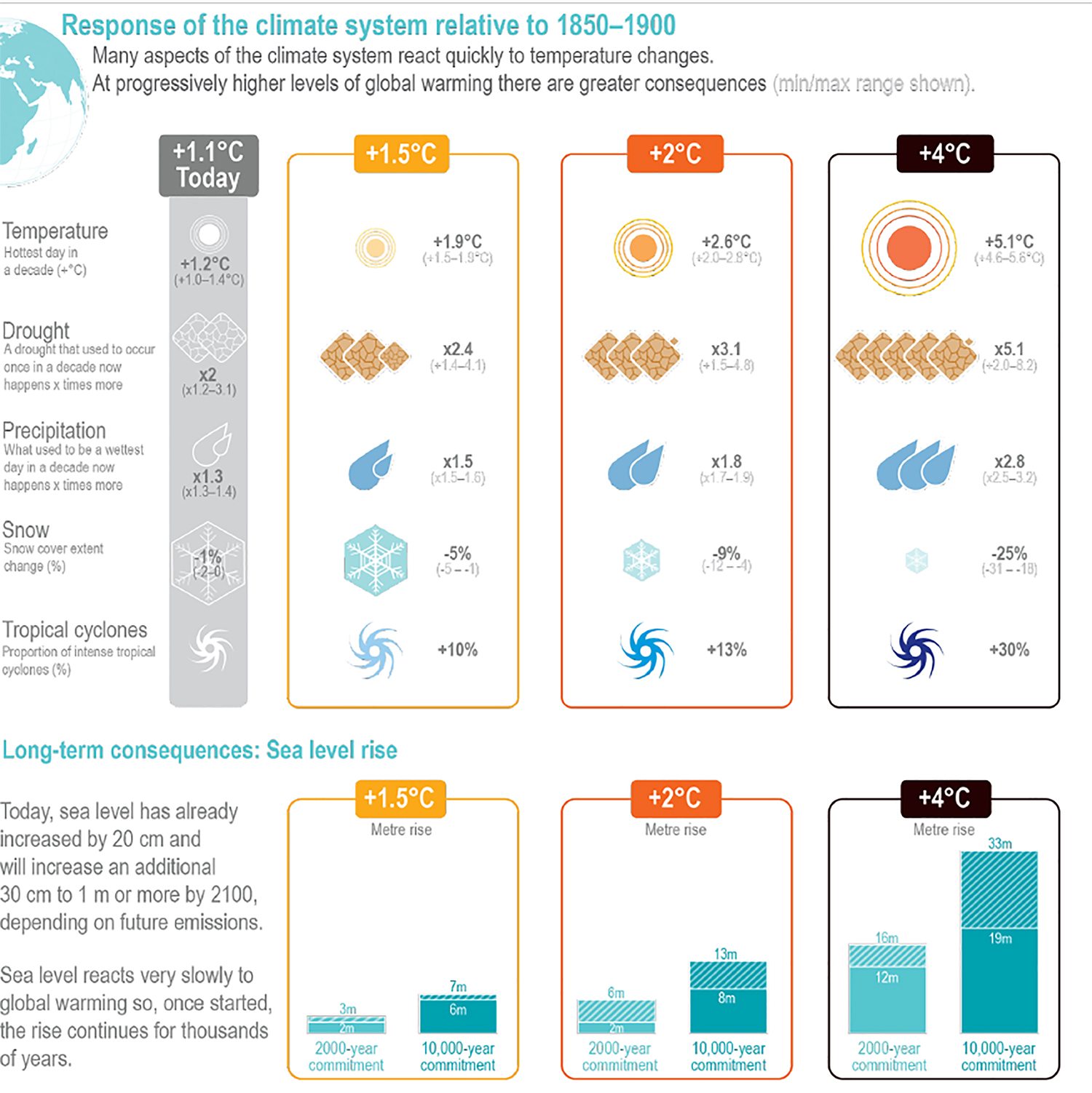
There is a way out
The IPCC report says: “Limiting human-induced global warming to a specific level requires limiting cumulative CO2 emissions, reaching at least net zero CO2 emissions, along with strong reductions in other greenhouse gas emissions.” The scientists have modelled impact scenarios for five levels of GHG emissions.
Scenarios with very low or low GHG emissions still lead to global temperature rise of 1-1.9C or 1-2.6 degrees, respectively, this century. Those are the levels where the world can adapt and live with the impacts.
For the very low emissions scenario, the IPCC says: “It is more likely than not that global surface temperature would decline back to below 1.5°C toward the end of the 21st century, with a temporary overshoot of no more than 0.1°C above 1.5°C global warming.” The medium scenario leads to a rise of 2-4.5 degrees. Current human activities lead to this, accounting for the IPCC prediction of a three-degree hotter world by the end of the century.
Current human activities lead to a three-degree hotter world by the end of the century
Higher-emission scenario models confirmed by the IPCC lead to a world hotter by 3-7 degrees or 5-8.5 degrees. In such scenarios effects that may not be controllable will start showing within 20 years.
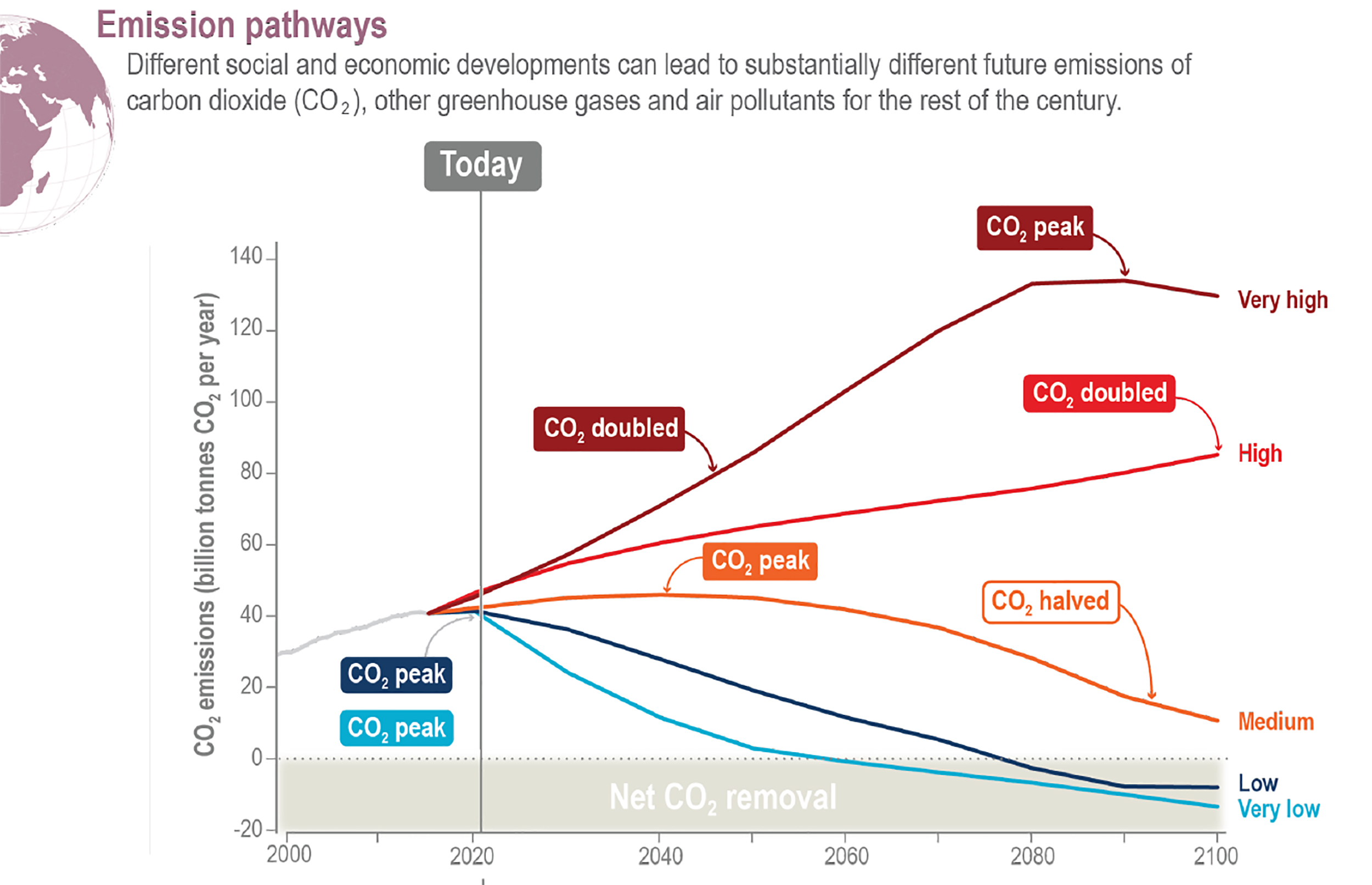
Every additional 0.5 degrees of global warming causes “clearly discernible increases in the intensity and frequency of hot extremes, including heatwaves and heavy precipitation, as well as agricultural and ecological droughts,” the report says.
Due to sea level rise, extreme sea level events that occurred once per century in the recent past are projected to occur at least annually in more than half of all areas.
Cities intensify human-induced warming locally, and further urbanisation – together with more frequent hot extremes – will increase the severity of heatwaves. In coastal cities, the combination of more frequent extreme events due to sea level rise, storm surge and extreme rainfall/riverflow events will make flooding more probable.
Friederike Otto, associate director of the Environmental Change Institute at the University of Oxford, told a group of journalists: “It is still possible to limit global warming to 1.5°C. If the world reaches net-zero carbon emissions by 2040, there is a two-thirds chance of doing that. If it reaches net zero by 2050, there is a one-third chance.”
Irreversible effects already
With CO2 concentrations in the atmosphere higher than at any time in at least two million years, the world is already experiencing some effects that cannot be reversed – glacier retreat, sea level rise, higher salinity and acidity, and lower oxygen levels at the sea surface. Heatwaves and sudden heavy rainfall are already more frequent and more intense across land. Marine heatwaves have approximately doubled in frequency since the 1980s.
The latest IPCC report has assessed impacts of climate change on specific ecosystems. On the Hindu Kush Himalayas, the report says:
• Snow cover has reduced since the early 21st century, and glaciers have thinned, retreated and lost mass since the 1970s, although the Karakoram glaciers have either slightly gained mass or are in an approximately balanced state.
• Snow-covered areas and snow volumes will decrease during the 21st century, snowline elevations will rise and glacier mass is likely to decline with greater mass loss in higher greenhouse gas emissions scenarios.
• Rising temperature and precipitation can increase the occurrence of glacial lake outburst floods and landslides over moraine-dammed lakes.
The air pollution blanket over South Asia, East Asia and West Africa has partly counteracted the warming effect of increases in monsoon rainfall in the last century. But as countries rein in air pollution – as they should for health reasons – the cloudburst problem will get worse, the report warns. Already, there are more severe cyclones as well.
The IPCC says there is now higher probability of compound extreme events – heatwaves, droughts, and wildfires when windy conditions are added.
For the first time, the IPCC has made regional assessments of climate change impacts. On Asia, the latest report says with high confidence:
Common regional changes
• The observed mean surface temperature increase has clearly emerged out of the range of internal variability compared with 1850-1900. Heat extremes have increased while cold extremes have decreased, and these trends will continue over the coming decades.
• Marine heatwaves will continue to increase.
• Average and heavy precipitation will increase over much of Asia.
• Mean surface wind speeds have decreased.
• Glaciers are declining and permafrost is thawing. Seasonal snow duration, glacial mass and permafrost area will decline further by the mid-21st century.
• Relative sea level around Asia has increased faster than the global average, with coastal area loss and shoreline retreat. Regional mean sea level will continue to rise.
Asian monsoons
• The South and Southeast Asian monsoon weakened in the second half of the 20th century. The dominant cause of the observed decrease of South and Southeast Asian monsoon precipitation since the mid-20th century is anthropogenic aerosol forcing.
• The dry-north and wet-south pattern of East Asian summer monsoon precipitation change results from the combined effects of greenhouse gases and aerosols.
Tibetan Plateau
• Over most of the Hindu Kush Himalayan region, snow cover has reduced since the early 21st century, and glaciers have retreated and lost mass since the 1970s.
• The Karakoram glaciers have remained either in a balanced state or slightly gained mass. During the 21st century, snow-covered areas and snow volumes will decrease in most of the Hindu Kush Himalayan, and snowline elevations will rise and glacier volumes will decline.
• A general wetting across the whole Tibetan Plateau and the Himalayas is projected, with increases in heavy precipitation in the 21st century.
South Asia
• Heatwaves and humid heat stress will be more intense and frequent during the 21st century (medium confidence).
• Both annual and summer monsoon precipitation will increase during the 21st century, with enhanced interannual variability (medium confidence).
Southeast Asia
• Future warming will be slightly less than the global average.
• Observed mean rainfall trends are not spatially coherent or consistent across datasets and seasons.
• Compound impacts of climate change, land subsidence and local human activities will lead to higher flood levels and prolonged inundation in the Mekong Delta.
• Although there has been no significant long-term trend in the overall number of tropical cyclones, fewer but more extreme tropical cyclones have affected the region.
East Asia
• Daily precipitation extremes have increased over parts of the region. Heavy precipitation will increase in frequency and intensity, leading to more frequent landslides in some mountain areas.
Policy implications
IPCC chair Hoesung Lee of South Korea said at the launch: “Unless there are immediate, rapid and large-scale reductions in greenhouse gas emissions, limiting warming to close to 1.5°C or even 2°C will be beyond reach.”
Working Group 1 co-chair Panmao Zhai of China said: “Stabilising the climate will require strong, rapid and sustained reductions in greenhouse gas emissions, and reaching net-zero CO2 emissions. Limiting other greenhouse gases and air pollutants, especially methane, could have benefits both for health and the climate.”
The report is likely to impact climate negotiations at the next summit of the UN Framework Convention on Climate Change, scheduled in Glasgow this November. Summit president Alok Sharma of the UK said: “Our message to every country, government, business and part of society is simple. The next decade is decisive, follow the science and embrace your responsibility to keep the goal of 1.5C alive. We can do this together, by coming forward with ambitious 2030 emission-reduction targets and long-term strategies with a pathway to net zero by the middle of the century, and taking action now to end coal power, accelerate the roll out of electric vehicles, tackle deforestation and reduce methane emissions.”
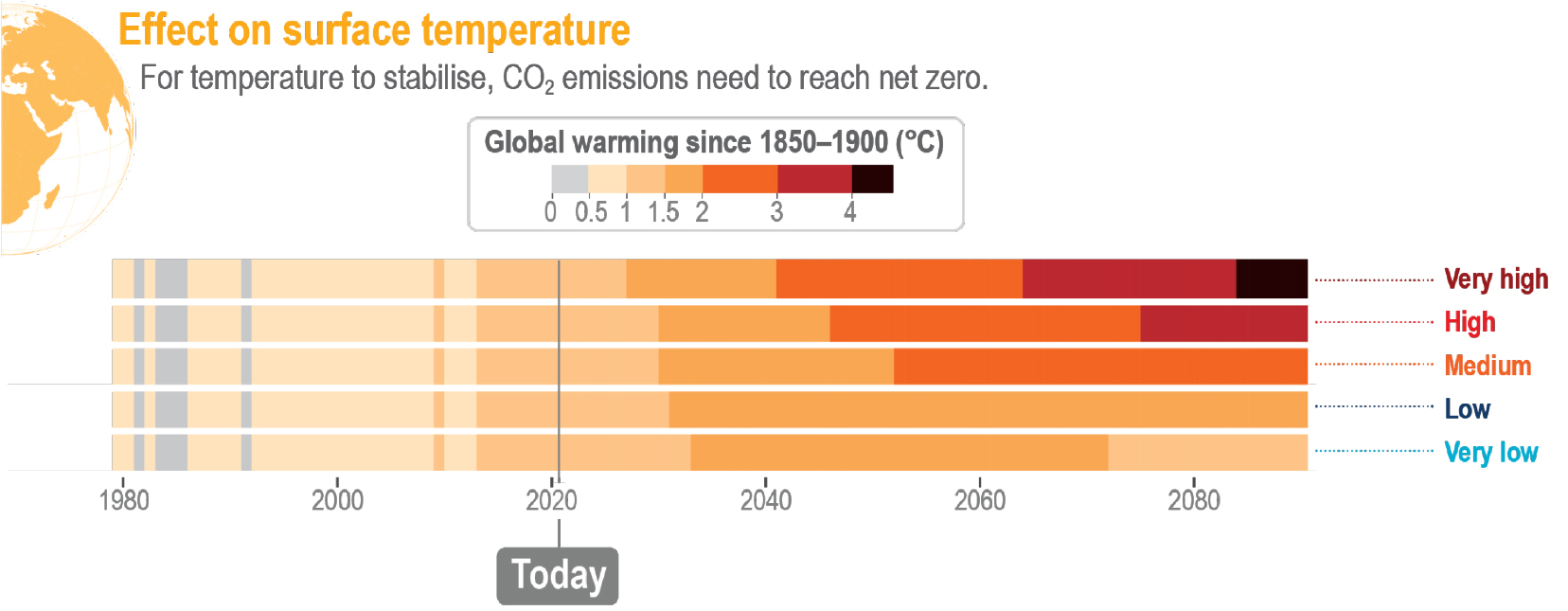
Ajay Mathur, director-general of the International Solar Alliance, said: “The global energy sector (power, heat and transport) accounts for around 73% of our total emissions… It becomes ever more important for us to be able to meet our growing energy needs without adding more CO2 to the atmosphere. Solar energy offers an ideal solution to all countries.”
Saleemul Huq, director of the Dhaka-based International Centre for Climate Change and Development, said: “G20 countries rapidly need to switch gears and this time stick to the pledges of delivering policies that ensure that we don’t exceed 1.5°C warming by the end of the century.”
Sonam P Wangdi of Bhutan, chair of Least Developed Countries Group, said: “By COP26 (the UN climate summit), developed countries must deliver their decade-old commitment to provide USD 100 billion annually and keep on increasing it as per the needs of countries facing climate impacts.”
Ulka Kelkar, director of the climate programme at World Resources Institute India, said: “For India, the predictions in this report mean people labouring in longer and more frequent heatwaves, warmer nights for our winter crops, erratic monsoon rains for our summer crops, destructive floods and storms that disrupt power supply for drinking water or medical oxygen production.”
Roxy Mathew Koll, senior scientist at the Indian Institute of Tropical Meteorology, said: “We need to urgently map the risks based on these projected changes, but in India we don’t even have a country-wide risk assessment based on observed changes. We might need to redesign our cities. Any kind of development should be planned based on an assessment of these risks – whether it is expressways, public infrastructure or even a farm or a house.”
